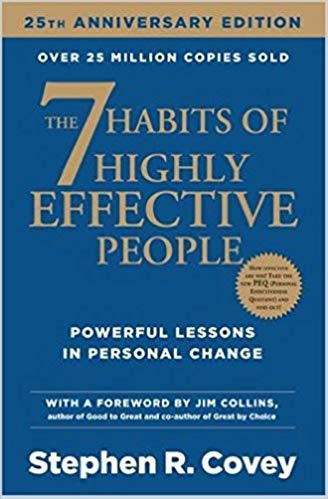

This article is an excerpt from the Shortform summary of "The 7 Habits of Highly Effective People" by Stephen Covey. Shortform has the world's best summaries of books you should be reading.
Like this article? Sign up for a free trial here .
But what is Quadrant 2? How do you use it? And how can you use Quadrant 2 to boost productivity?
Quadrant 2 is the area of Stephen Covey’s time management matrix that includes tasks that are important, but not urgent. As Covey explains in The 7 Habits of Highly Successful People, Quadrant 2 is the most important quadrant and to be productive, you need to spend most of your time in Quadrant 2.
Working toward Quadrant 2 is an ongoing process that will be a consistent part of the 7 habits. Learn how to identify Quadrant 2 tasks to be more productive.
What is Quadrant 2?
Covey’s Quadrant 2 is not urgent, but important. This is where effective people focus their time and energy, and the discipline to prioritize these tasks is key to self-management and achieving your personal mission. Quadrant 2 includes activities that could easily be put off for their lack of apparent urgency, but which will greatly benefit your life in the long term if you invest the time in them; they include developing relationships, defining your personal mission statement, exercising, and performing preventive maintenance (e.g. oil changes for your car, health check-ups, flossing, or home maintenance).
Effective people are proactive and understand the value of investing their time and energy into Quadrant 2 activities. Effective people respond to opportunities to do what’s important, instead of reacting to urgent problems. When things come up, it’s easier to determine what’s important and what isn’t once you’ve defined your goals and personal mission statement.
Shifting from Quadrant 1 to Quadrant 2
Covey asked several shopping center managers what one thing could they could do that would improve their businesses. They all responded that building better relationships with their tenants — the store owners in their shopping centers — would have a tremendous impact. However, they were so consumed with meetings and reports and other urgent matters that they were only spending about 5 percent of their time developing these relationships.
Quadrant 1 was eating up so much of the managers’ time, they hardly had any left for the Quadrant 2 relationship-building that they felt would greatly benefit them. The store owners were overburdened themselves with employment, cost, and inventory issues; on top of that, they only seemed to hear from the shopping center managers when something was wrong or urgent, leading to a strained relationship.
The shopping center managers decided to take a proactive step and dedicate significantly more time to building relationships with tenants. After about a year and a half, the managers were spending about 20 percent of their time working with tenants, and in that process the managers had become better at listening and consulting the store owners so that their interactions were more positive and productive. As a result, everyone benefitted: The store owners implemented new skills and ideas that boosted sales, which increased the shopping center managers’ lease revenues and interest from potential tenants.
Say “No” and Make Room for Quadrant 2
When you begin shifting your attention to Quadrant 2, at first you’ll only be able to take time from the unimportant Quadrant 3 and 4 activities. You’ll still need to attend to the urgent and important tasks in Quadrant 1, but those will gradually shrink as you put more effort into Quadrant II preventive activities. If you want to make time for Quadrant 2 priorities, you’ll have to say “no” to unimportant tasks — even when they appear urgent.
Certain activities may be very appealing or contribute to worthwhile causes, but are not important in contributing toward your personal goals; these will be some of the hardest things to say “no” to. But your time and energy are finite, so you always have to say “no” to some things: If you don’t make a point of saying “no” to the unimportant tasks, then you’ll be saying “no” to the important ones.
Keeping your focus on Quadrant 2 is a paradigm that you can develop from a principle center; having a clear sense of your mission, principles, and values, will make it easier to say “no” to the unimportant because you’ll know you’re making room for the important. If you’re centered on something external like your spouse, work, money, or pleasure, you’ll get stuck in a cycle of reacting to outside factors — and their supposedly urgent matters — in Quadrants I and III.
How to Create a Quadrant 2 Paradigm
What is Quadrant 2 is an important question, but so is asking how we can get there.e Like any paradigm shift, developing a Quadrant 2 paradigm will take time, practice, and deliberate effort. Start by planning out one week according to Covey’s Quadrant 2-focused, fourth-generation method.
Step 1: What are Your Roles?
Just as you did for your personal mission statement, identify the various roles you have in the personal, professional, and leisure areas of your life; this will help you keep your focus and priorities balanced and avoid neglecting any particular area of your life and responsibilities. In this exercise, only focus on roles that are applicable for the next week.
In addition to your role as an individual, list one or more roles you have in your family (e.g. spouse, mother, daughter, sister, aunt), a few roles in your work life (e.g. executive producer, vice president of content, department manager), and one or more roles you have in your community or leisure activities (e.g. church elder, volunteer, recreational volleyball team captain).
Step 2: Set Goals
Think about one or two important results you’d like to achieve for each role within the next week. These goals should contribute to the longer-term, big-picture goals in your personal mission statement, and at least some of them should fall into Covey’s Quadrant 2. If you haven’t created your personal mission statement yet, be mindful to set these goals with a general focus on what’s important to you in the long term.
Step 3: Schedule Your Goals
Now that you have a list of goals to accomplish in the next week, start scheduling them. Some goals might be time-sensitive, or only doable during business or weekend hours; with this in mind, assign a day (or take it a step further and create an appointment time) to achieve each goal. As you’re scheduling out your week, be sure to check your calendar for prior commitments, assess how they fit into your goals, and decide whether to keep, reschedule, or cancel them.
Step 4: Adapt as Needed
As you move through your week, begin each day by reviewing what’s on that day’s agenda and remembering why these activities are important for your overall goals. When things come up unexpectedly, address them according to your goals and scheduled priorities. Third generation-style daily planning can help you make order of your day, and it will be a more effective use of the method when it’s in the context of your weekly schedule.
When you’ve scheduled all of your goals for the week, add a chunk of time for renewing and revitalizing activities that we’ll discuss in Habit 7. Even with all of these goals and activities scheduled, your week should still have ample spaces of open, unscheduled time. This is critical: It gives you the flexibility to respond to unexpected events and enjoy spontaneous moments, which creates a higher quality of life and makes this approach sustainable.
In order to achieve Quadrant 2 (or Quadrant II), you must first develop your personal mission statement and determine what is important to you. Remember, Quadrant 2 is about prioritizing things that are important, but not urgent, and are the things that will make you feel most fulfilled and let you focus on things that matter.
———End of Preview———

Like what you just read? Read the rest of the world's best summary of "The 7 Habits of Highly Effective People" at Shortform . Learn the book's critical concepts in 20 minutes or less .
Here's what you'll find in our full The 7 Habits of Highly Effective People summary :
- How to prioritize the hundred tasks you have to focus on the one or two that really matter
- The right way to resolve every disagreement and argument
- How to avoid burning out and succeed over 20+ years






